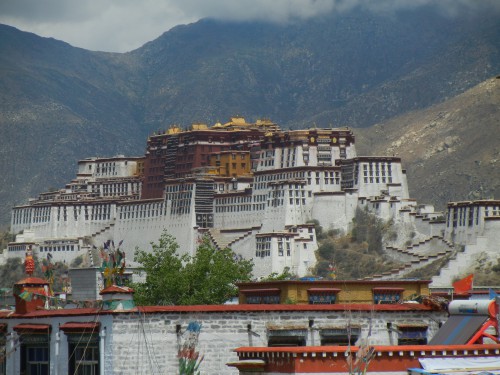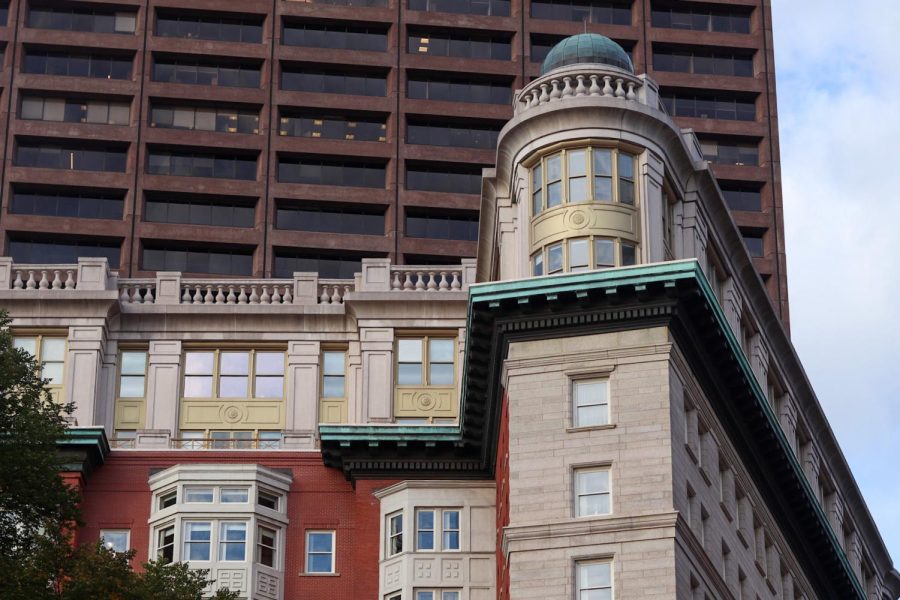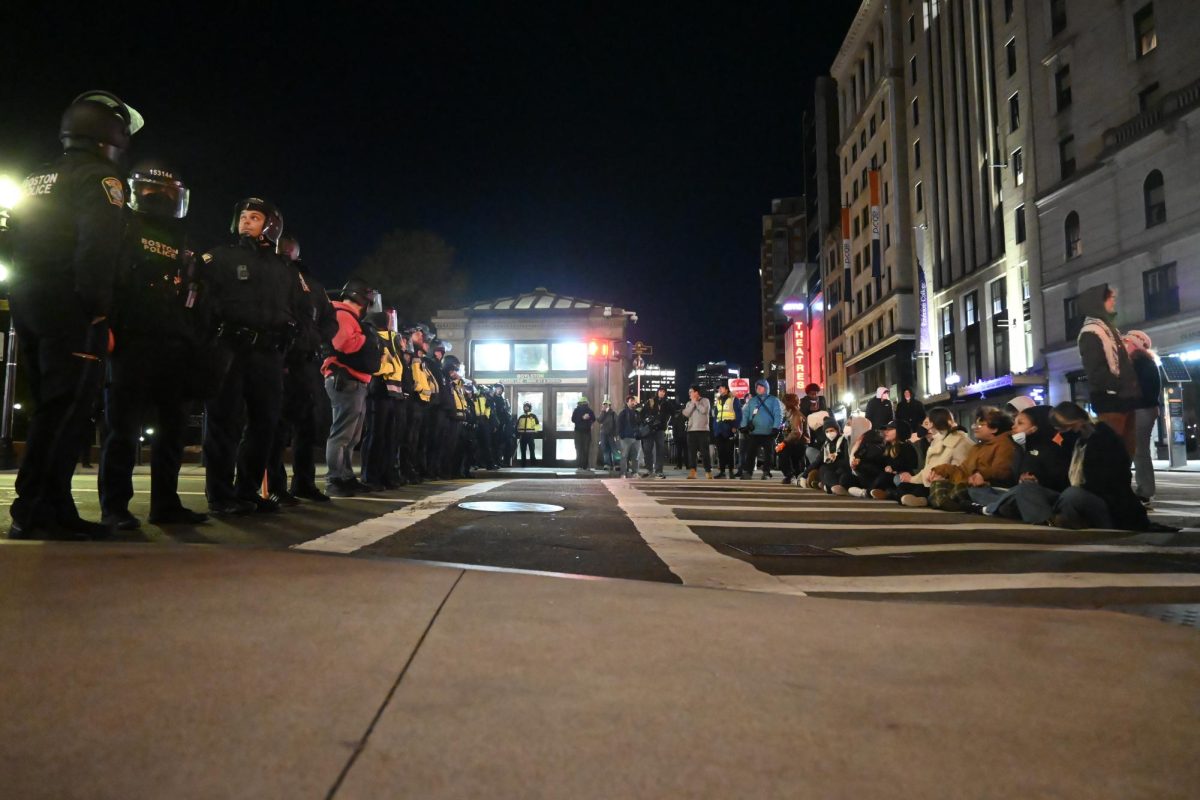Suffolk University economics professor Jonathan Haughton was teaching a summer course in Shanghai this year when he decided to take a trip to Tibet. While he was excited to see the ancient culture of a region that has so fascinated him, he was not expecting to find such modern influences in the storied city of Lhasa.
“The culture there is very different from what I am used to and I wanted to see it before it melts away… I don’t think it will ever melt all away, but tourism will transform it,” Haughton explained at a lecture co-sponsored by the Asian studies program, the economics department, the Rosenberg Institute, and the Chinese Student Association.

(Photos by Jonathan Haughton)
Speaking to a group of about 50 students and faculty, Haughton gave an overview of Tibet’s long history, described the influences that inspired him to take a journey on the world’s highest elevation railroad, and passionately shared photos and stories of his experience.
“Anyone from China will recognize this as a typical waiting room,” Haughton joked to the audience’s delight as he showed a photograph of a jam-packed train station in Shanghai.
The train cars need oxygen feeds to reduce pressure in the compartments since it reaches such high altitudes on its trek across China. Haughton even had a picture of a Japanese woman in his compartment with an oxygen tube in her nose, “like at Mass General,” he said.
The railway snakes its way through the arid countryside, one of the least densely populated areas of the world. According to Haughton, there are still about two million herders in Tibet out of a total population of about three-and-a-half million.
There were signs of people on the Tibetan plateau 20,000 years ago. The political area of Tibet we talk about today is truly only the southern part of the actual geographic area. Throughout history Tibetans were friendly with both the Chinese and the Mongols, even acting as mediators between the two groups at times. Since the early 1700s, Tibet has fluctuated between being a de facto independent region and a protectorate of Chinese influence several times.
But in 1959 the Chinese military came to take full control of the region and, the Dalai Lama fled to India leaving the devoted Buddhist people on their own. Haughton visited the Potala Palace, a 17th century building that use to serve as part temple, part fortress, and part home to the Dalai Lamas. “It’s a bittersweet experience for many to visit the palace because of course it is now unoccupied,” he said.
Haughton called Lhasa’s Jokhang Temple and Barkhor Square the “heart of the Tibetan Buddhist universe.” He saw many religious pilgrims performing Kora, clockwise circular walking patterns around holy sites, and arduous prostrations in the square during all hours of the day. “It’s a real workout,” Haughton said, “I’m not a religious person but it is astonishing the depth of devotion people bring to it.”
[nggallery id=10]
At the Sera Monastery, Haughton had the opportunity to watch monks debate theology. “These are not polite debates,” he warned before he played videos he took of the sessions. Several groups of monks gather together as the teacher poses a question to one of the men, and then the young monk seems to put on a kind of performance as he moves his body swiftly through meditation-like exercises or even gets in physical tussles with other monks around him.
Throughout the presentation, Haughton compared his photos from this summer to photos from famous travellers in the past. Most notably, he included pictures from the former Nazi officer Heinrich Harrer who fled to Tibet following World War II. Harrer wrote a book entitled “Seven Years in Tibet” where he describes his time in the region and meeting the current Dalai Lama, Tenzin Gyasto, when the spiritual leader was only 14-years-old.
“We can actually trace the Dalai Lama’s English back to a Nazi officer. The world is a fascinating place,” Haughton said.
While the lecture focused mainly on Haughton’s personal travels, he also included some information on the economy: “How could I not?” he grinned.
“Tibet is somewhat poorer than China, but urban Tibet is not really poor. You aren’t really walking back into medieval times anymore,” Haughton said.
Most visitors to Tibet are Chinese citizens, as foreigners must apply for another type of visa to enter Tibet and must go with a tour group. But, Haughton noted, it has become rather fashionable for Chinese families to drive across the country as a road trip vacation instead of taking the train.
“The cheap souvenirs in Tibet are imported into China from Nepal. The Chinese goods are actually expensive. This is the new China,” he said.
Tibet is technically an autonomous region within China, but since 1959 the Chinese government has exercised a lot of control over the area.
Haughton described seeing three Chinese soldiers marching across a square, the middle soldier in the line holding a fire extinguisher in case a monk decides to self-immolate in protest.
“Tibet says they only want autonomy, not independence,” Haughton said, “But autonomy to do what? The devil is in the details.”
While Tibet may still want more freedom from China, it will be difficult to keep outside influences away from the iconic region.
“The world has been knocking on the doors of Tibet for years and they will not go away,” Haughton said. “When we were there, someone was opening a BMW dealership.”












